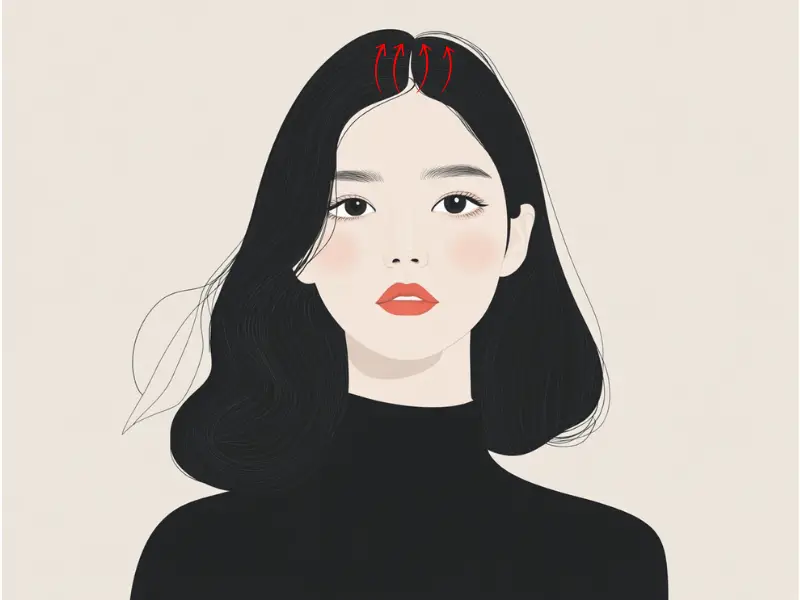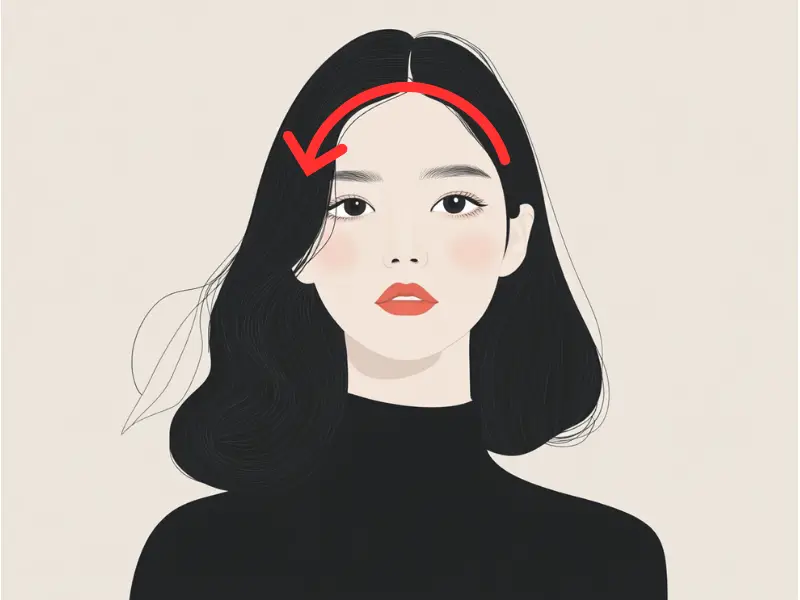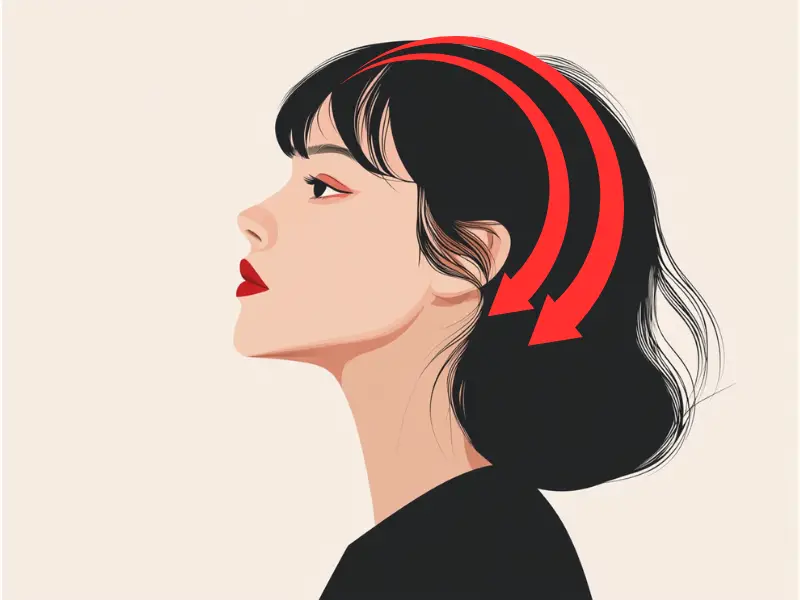The gua sha comb technique is a powerful tool rooted in Traditional Chinese Medicine (TCM), offering a holistic approach to relieving scalp tension and promoting hair growth. This method combines the benefits of gua sha with the unique design of a specialized comb, targeting the scalp to enhance blood circulation, release muscle tension, and encourage healthier hair. In this article, we’ll explore five essential gua sha comb techniques that can transform your hair care routine. If you’re new to gua sha, be sure to check out our basic guide to gua sha to get started.
1. The Crown Sweep for Stimulating Hair Follicles
One of the most effective gua sha comb techniques for promoting hair growth is the Crown Sweep. This technique focuses on stimulating the hair follicles at the top of your head, where blood flow is often limited.
- How to Perform:
- Start by placing the gua sha comb at the front of your hairline, just above the forehead.
- Gently sweep the comb back toward the crown of your head, applying light to moderate pressure.
- Repeat this motion several times, focusing on the center of your scalp.
- This movement increases blood circulation to the scalp, encouraging the delivery of nutrients to the hair follicles, which can promote stronger and healthier hair growth.

- When to Use:
- Incorporate the Crown Sweep into your morning routine to awaken your scalp and prepare it for the day ahead. This technique is particularly beneficial if you experience thinning hair at the crown.
2. The Temple Glide for Relieving Tension
Tension in the scalp can lead to headaches, hair loss, and general discomfort. The Temple Glide is a soothing gua sha comb technique that targets the temples, an area where tension often accumulates.
- How to Perform:
- Hold the gua sha comb horizontally, with the teeth facing your scalp.
- Place the comb at your temples, just above the ears.
- Gently glide the comb back and forth in small, circular motions.
- Gradually move from the temples toward the back of the head, maintaining light pressure.
“The recommended time for gua sha is after a bath when blood circulation is improved. The frequency should be around 2-3 times per week.” — Ms. Mai Sogawa, Senior TCM Therapist

- Benefits:
- This technique helps to relax the muscles around the temples, reducing tension that can contribute to headaches and stress-related hair issues.
- Regular use of the Temple Glide can lead to a more relaxed scalp, which is crucial for healthy hair growth.
3. The Nape Stroke for Enhanced Circulation
The Nape Stroke is a gua sha comb technique that focuses on the back of the neck, an area often overlooked in hair care routines. This technique is excellent for enhancing circulation and releasing tension in the neck and scalp.
- How to Perform:
- Begin at the base of your skull, where your neck meets your head.
- Use the gua sha comb to gently stroke downward along the nape of your neck.
- Apply moderate pressure as you move the comb from the center of the nape outward toward the sides.
- Repeat this motion several times, focusing on areas that feel particularly tense.

- Benefits:
- The Nape Stroke helps improve blood flow to the scalp, which can aid in the delivery of oxygen and nutrients essential for hair growth.
- This technique also relieves tension in the neck and upper shoulders, promoting relaxation and overall well-being.
4. The Hairline Edge for Reducing Hairline Tension
The hairline is a common area where tension builds up, particularly for those who frequently tie their hair back tightly. The Hairline Edge technique is designed to release this tension and encourage hair growth along the hairline.
- How to Perform:
- Hold the gua sha comb with the teeth facing downward.
- Position the comb at the edge of your hairline, starting at one side of your forehead.
- Slowly glide the comb along the hairline, moving toward the opposite side.
- Apply gentle pressure, ensuring that the comb maintains contact with the scalp.
“Avoid using gua sha on acne, wounds, or sunburned skin, as it can be sensitive. Always use oil to prevent friction from damaging the skin. Be cautious not to apply too much pressure or overdo it on the same area, as this can cause redness or bruising.” — Ms. Mai Sogawa, Senior TCM Therapist

- When to Use:
- This technique is particularly beneficial after wearing tight hairstyles, such as ponytails or buns.
- Regular use of the Hairline Edge technique can help prevent hairline thinning and breakage.
5. The Full Scalp Sweep for Overall Scalp Health
The Full Scalp Sweep is an all-encompassing gua sha comb technique that covers the entire scalp. This method is ideal for those looking to maintain overall scalp health while promoting relaxation and hair growth.
- How to Perform:
- Start at the front of your scalp, just above the forehead.
- Gently sweep the gua sha comb backward, moving across the entire scalp.
- Continue this motion, working your way from the center to the sides of the head.
- Make sure to cover all areas of the scalp, using light to moderate pressure.

- Benefits:
- The Full Scalp Sweep stimulates blood circulation, helps to distribute natural oils, and encourages lymphatic drainage.
- This technique is perfect for ending your day, providing a calming effect that can improve sleep quality and reduce stress.
Incorporating these gua sha comb techniques into your hair care routine can not only relieve tension but also improve blood circulation, which is vital for healthy hair growth. Whether you’re looking to address specific hair concerns or simply maintain a healthy scalp, these techniques offer a natural and effective solution.

Try our Anti-Aging Gua Sha Tool designed to bring out your skin’s natural glow.
Best Gua Sha Product- Anti-Aging: The tool is designed to target 11 specific aging signs such as wrinkles and sagging skin. By following the 7-step routine, users can improve skin firmness and reduce fine lines naturally.
- Enhances Skincare Routine: It works effectively with serums and lotions, boosting absorption and efficacy of skincare products.
- Visible Skin Improvement: Users can expect a smoother complexion, reduced puffiness, and a more youthful appearance.
 P. Sze
P. Sze 
















